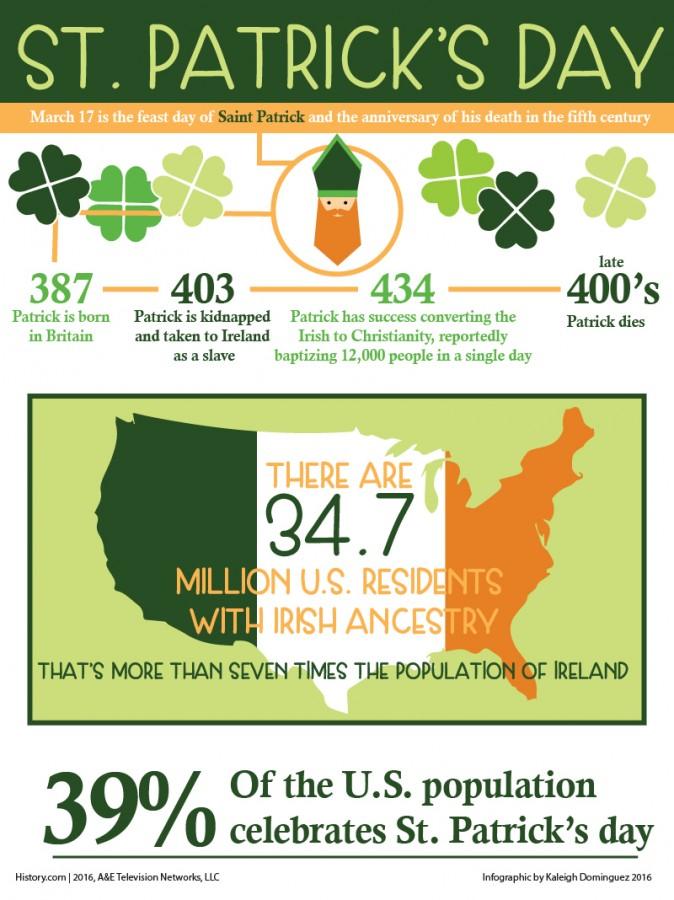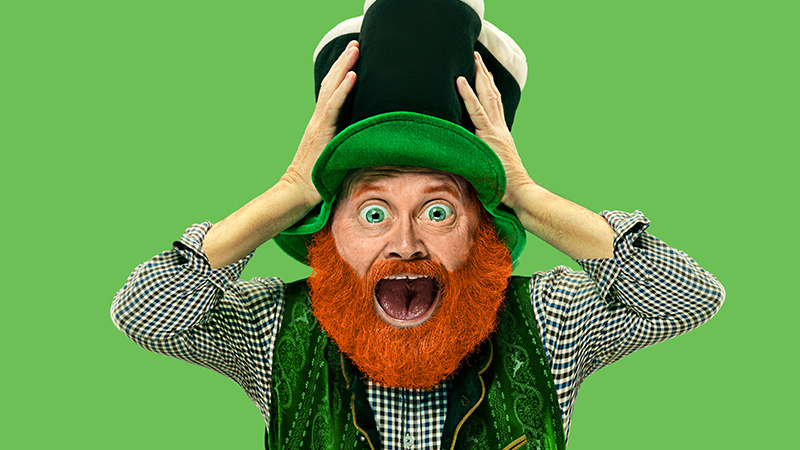Gallery
Photos from events, contest for the best costume, videos from master classes.
 |  |
 | |
 |  |
 |  |
 |  |
 |  |
St. Patrick’s Day, celebrated on March 17 each year, is known for its parades, shamrocks, and a whole lot of green. It’s a day when people around the world embrace Irish culture — whether they have Irish heritage or not. But behind all the revelry, St. Patrick’s Day has a deep and fascinating history that goes far beyond the modern celebrations. Some of the traditions we associate with The earliest Saint Patrick’s Day parade took place in 1601 in what is now St. Augustine, Florida—not Ireland! 6. It’s a Religious and Secular Holiday. While it began as a religious feast day, Saint Patrick’s Day has evolved into a global celebration of Irish culture. 7. Guinness and the Holiday. On Saint Patrick’s Day, nearly 13 The 200 th anniversary of St Patrick’s Day was marked in Sydney Opera House by making it green. 17. The first St Patrick’s Day celebration in the United States was held in Boston in 1737. Dyeing of the Chicago river on Saint Patrick’s day. Image credit – berni0004. 18. On this day, people usually eat corned beef and cabbage, and they The largest St. Patrick’s Day parade outside of the U.S. and Ireland is held in Montreal, Canada. Moscow, Russia, has celebrated St. Patrick’s Day with a parade since 1992. St. Patrick’s Day became an official holiday in Ireland in 1903. Waterford, Ireland, held the first documented St. Patrick’s Day parade in Ireland in 1903. Fascinating St. Patrick’s Day Facts. St. Patrick’s original color was blue, not green. The color green became associated with him due to Ireland’s nickname, "The Emerald Isle." More than 13 million pints of Guinness are consumed worldwide on St. Patrick’s Day. The Irish name for St. Patrick’s Day is "Lá Fhéile Pádraig." Records show that a St. Patrick’s Day parade was held on March 17, 1601, in a Spanish colony in what is now St. Augustine, Florida. The parade and a St. Patrick’s Day celebration a year St. Patrick’s Day trivia and fun facts that go beyond green beer and leprechauns. Dive into the history, myths, and surprising traditions that make March 17 a global celebration. St. Patrick’s Day isn’t just about wearing green and celebrating with parades—it’s packed with history, traditions, and surprising facts! Here are 15 fun St. Patrick’s Day facts to impress your friends and boost your holiday spirit. 1. St. Patrick Wasn’t Irish Believe it or not, St. Patrick was born in Roman Britain, not Ireland! He From the truth about St. Patrick himself, to the history of St. Patrick's Day parades, to why people wear green on St. Patrick's Day, to how much money Americans will spend celebrating St. Patrick's Day, these 19 fun facts will test your knowledge and maybe even teach you something new about this festive day. Here are 10 fun facts about St. Patrick’s Day that might surprise you! For more interesting reads on celebrations and community living, visit Springpoint Senior Living. 1. St. Patrick Wasn’t Irish. That’s right! Although he’s the patron saint of Ireland, St. Patrick was actually born in Britain around the late 4th century. This was another interesting St Patrick’s Day fact. Did you know? The odds of finding a four-leaf clover are about 1 in every 10000. Four-leaf clovers are associated with luck, whereas shamrocks have religious ties. The flag’s colors are often prominently displayed during St. Patrick’s Day celebrations, symbolizing the holiday’s connection to Irish heritage and the hope for harmony and understanding among all people. 9. St. Patrick’s Day is the third most popular drinking day in America Image license via iStockphoto.com Interesting St. Paddy's Day history, funny trivia questions and more. 30. In 2020, the St. Patrick's Day parade was canceled in NYC for the first time in how many years because of COVID? The worldwide spread of St. Patrick’s Day was partially due to the 1845’s Great Potato Famine that forced more than a million Irish to emigrate. Today, more than 200 countries celebrate it. 10. St. Patrick’s Day Was Once a Dry Holiday. For much of the 20th century, St. Patrick’s Day was considered a strictly religious holiday in Ireland A modern-day St. Patrick’s Day parade in New York City. Source: TimeOut Before coming to the United States, St. Patrick’s Day was obviously most often celebrated in Ireland from at least the 1600s on. However, records indicate that the first parade, an event often associated with the holiday, was celebrated in the then-Spanish colony of St This is one of the few St. Patrick’s Day facts that I did know..! The largest St. Patrick’s Day parade in the world takes place in New York City. The parade attracts a staggering two million+ people every year. 4. Ireland’s first parade. The very first St. Patrick’s Day in Ireland was held in County Waterford in 1903. 5. A national holiday Discover 12 fascinating St. Patrick’s Day facts that blend Irish history, folklore, and modern celebrations. From the origins of the shamrock to eco-friendly initiatives and virtual parades, explore intriguing insights into the legacy of St. Patrick’s Day and embrace the spirit of the Emerald Isle. Initially a religious feast day in the 17 th century, St. Patrick’s Day has evolved into a day of celebrating Irish culture with parades, music, dancing, special foods, and of course, a lot of green. In honor of St. Patrick’s Day, here are a few interesting St. Patrick’s Day facts! Saint Patrick didn’t wear green. ESA Marathon Hearing – The legislative push to use public dollars to help parents pay for private schools drew people from all over Texas to a marathon hearing with House lawmakers. St. Patrick’s Day was recognized by the Vatican as an official feast day in 1631. [4] In the latter part of the 19th century, Irish high society celebrated St. Patrick's Day at a grand ball held at the castle in Dublin. [4] St. Patrick’s Day was declared a public, rather than religious, holiday in Ireland in 1904. [4]
Articles and news, personal stories, interviews with experts.
Photos from events, contest for the best costume, videos from master classes.
 |  |
 | |
 |  |
 |  |
 |  |
 |  |